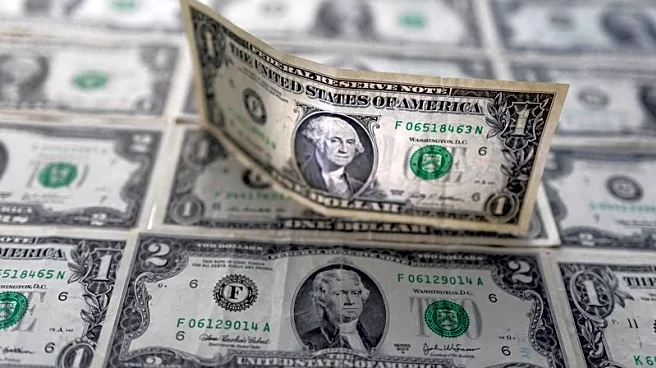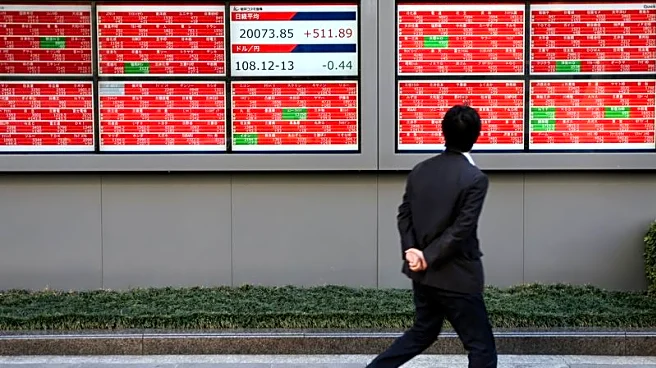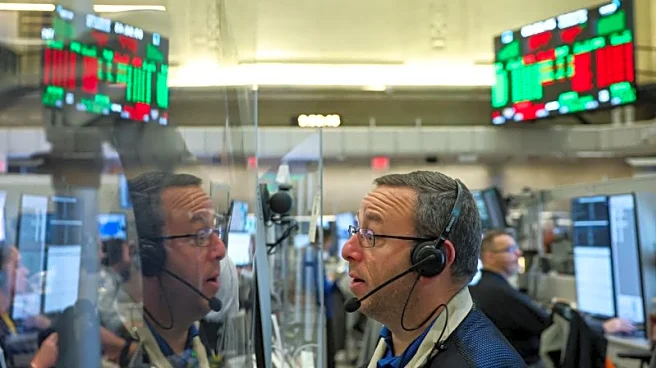What's Happening?
Gold prices held steady as a stronger dollar and reduced expectations for further Federal Reserve rate cuts influenced investor behavior. Following hawkish remarks from Federal Reserve Chair Jerome Powell, traders have adjusted their expectations, now
seeing a 71% chance of a rate cut in December, down from over 90% previously. Gold, which benefits from low-interest-rate environments and economic uncertainty, has seen a 53% increase this year but has recently retreated from record highs. Investors are also focusing on upcoming U.S. economic data, including ADP employment figures and ISM PMIs, which could provide further insights into the Federal Reserve's policy direction.
Why It's Important?
The stability of gold prices amidst changing interest rate expectations reflects broader economic uncertainties and investor sentiment. Gold is often seen as a safe-haven asset, thriving in times of economic instability and low interest rates. The Federal Reserve's policy decisions have a direct impact on gold prices, influencing investor strategies and market dynamics. The recent adjustments in rate cut expectations highlight the sensitivity of financial markets to central bank communications and economic indicators. Stakeholders, including investors and financial analysts, are closely monitoring these developments to gauge future market trends.
What's Next?
Investors will be closely watching the release of key U.S. economic data, which could influence the Federal Reserve's policy decisions and, consequently, gold prices. The potential for further rate cuts remains a critical factor for market participants. Additionally, changes in global trade policies, such as China's recent tax policy adjustments, could also impact gold demand and prices. The interplay between economic data, central bank actions, and geopolitical developments will continue to shape the outlook for gold and other precious metals.














